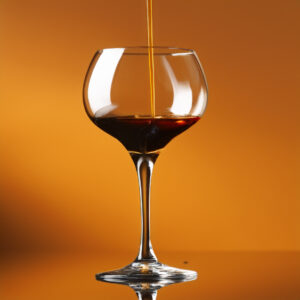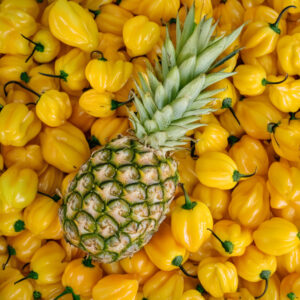
City Steading Brews Guide to Brewing
Our goal is simple. We aim to educate and entertain on the topic of home brewing. By illustrating simple methods of making beer, cider, mead and wine at home, we hope to eliminate fear and doubt so more people might enjoy this fun hobby. We hope to appeal to all levels of home brewers, from the newest of the new to the well seasoned brewer.
Our Views
- The first thing to understand is that our guidelines are like the Pirate Code, they’re a guideline, not a rule. You are free to brew however you like, but, see our last point to see why our assistance might be limited if you go too far outside our methodology.
- One fundamental idea to remember is that our methods are used by thousands of people the world over and have been used for centuries to make wonderful homemade wine, mead, cider and beer. Any fears of illness, poison, etc, are unfounded as… home brewing is no more dangerous than cooking at home.
- While we promote the idea of “brew how you like”, if you use additives and methods we don’t promote, our assistance to you will be limited. Every brewer has their own way of doing things and ours is outlined here, so within these guidelines, we know exactly how to assist if things go awry, but… when you use things we don’t, or use methods we don’t, we simply are outside of our sphere of influence and cannot give as much meaningful help.
Important Practices
- Whenever practical or possible, sanitize your gear, your hands (as best you can), bottles, jars, spoons, hydrometers, cylinders, etc. There’s no need to get fanatical, but cleaner is generally better in terms of reducing infections. Our favorite sanitizer is Star San. Check out our shop if you are interested in purchasing some for yourself.
- Try not to pour your brews from vessel to vessel, instead use a siphon. Yes, we’ve done a “rough rack” in a few videos to remove solids and fruit. This can be a bit risky, but if done while fermentation is still active “shouldn’t” cause any issues with oxidation. If in doubt, you can always get everything moving and siphon it to be safe.
- Try to use appropriate wine or beer bottles for your brews. Reuse whiskey, liquor, wine and beer bottles when you can. We prefer flip-top bottles due to very low waste and practicality. Avoid mason jars if you can as they are not made to hold pressure, and even trapped gasses in a “non-carbonated” brew can cause enough buildup of pressure to explode jars.
Specific Ingredients
- Yeast Nutrients and their usage. You can brew any way you like. We prefer a simpler approach, and thus won’t really delve into TOSNA practices. It’s not that we disagree with them on any level other than it being less than simple. We’ve experimented with yeast hulls and Fermaid-O and to be honest, not found a significant difference in the final product. Honey does not contain all the nutrients yeast need for perfect fermentation, however, adding fruits and other adjuncts can help alleviate this. Our approach is to keep it simple, and there are plenty of sources for information on more complex brewing methods. We do add Fermaid-O to nearly every brew now more as an “insurance” that fermentation will go more or less as planned.
- Camden Tablets, Sulfites and Sorbates. These are all preservatives, and yes, commercial wineries and meaderies use them. Mostly due to laws and legality. With home brew, we have control over where and how our finished brews are stored and treated. Shipping cross country in the back of an unrefrigerated truck wouldn’t be something we’d willingly do to our precious brews, right? Thus, these things are unnecessary for the home brewer. All fermented beverages contain trace sulfites naturally, and we would prefer to keep more of them out, if possible. You will see a few videos where we have utilized them to illustrate the appropriate time and method of implication, however, it isn’t our preferred method.
- Pectinase or pectic enzyme is used to help clarify brews and there is some evidence you can get a very small amount of sugars out of fruit using it. The main reason we don’t promote it’s use is that we just like keeping things uncomplicated, however when brewing with whole fruit, pectic enzyme can be helpful. It doesn’t cause any harm, but it’s largely unnecessary, as our brews clear 90% of the time on their own. Those that don’t, well, a bit of haze, though some may find it unsightly, doesn’t detract from the flavor.
- Wine Tannin is a popular way to add tannins to a brew, and really there’s nothing wrong with it per se. There are other ways to get tannins, such as tea for one, fruit skins and even herbs all contain tannins. Tannin is an important factor in the sensation of a good beverage, so pick the tannin additive that is right for you.
- Yeasts, yes, we use a lot of commercial yeasts, which might sound like a contradiction to our ethos. Mostly, we do it for consistency and because we’re teaching those new to brewing. I’d hate for a new brewer to try a natural or wild yeast fermentation and have it fail or stall out before finishing, and get discouraged. So, we suggest commercial yeasts due to consistency that we can feel confident in recommending.
- Clarifiers are used to make a brew clear. We’ve found them mostly unnecessary, as 1) Clarity isn’t critical. A little haze doesn’t affect flavors at all. No, we don’t like chunks in our brews either, but a little less than clear isn’t an issue at all. And… 2) 90% of our brews go crystal clear on their own. Some of these clarifiers are natural, and we don’t take issue with them, we just don’t find them to be needed.
Like how we view homebrewing and want to help support our continued efforts? Check out our Merch to see if something is right for you! Thank you and happy brewing!






